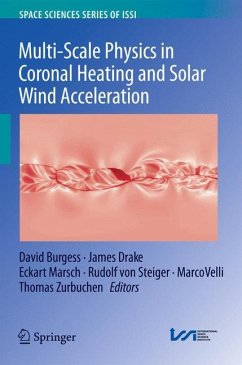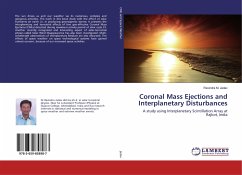
Solar Coronal Heating by Microflares and Nanoflares
Solar Coronal Heating
Versandkostenfrei!
Versandfertig in 6-10 Tagen
45,99 €
inkl. MwSt.

PAYBACK Punkte
23 °P sammeln!
The sun is a main sequence G2V star, based on Hertzsprung-Russel(H-R)diagram classification. Earlier studies have shown that the temperature of the core is about 15 MK and as we move away from the core, temperature decreases from 15 MK to 5800 K at photosphere. There is anomalous variation of temperature after photosphere, it starts increasing for further layers and there is abrupt change in temperature from transition region to corona. After the corona, temperature decreases again slowly. The temperature of the corona is found millions of kelvin higher than that of the surface temperature. Th...
The sun is a main sequence G2V star, based on Hertzsprung-Russel(H-R)diagram classification. Earlier studies have shown that the temperature of the core is about 15 MK and as we move away from the core, temperature decreases from 15 MK to 5800 K at photosphere. There is anomalous variation of temperature after photosphere, it starts increasing for further layers and there is abrupt change in temperature from transition region to corona. After the corona, temperature decreases again slowly. The temperature of the corona is found millions of kelvin higher than that of the surface temperature. This major unresolved fact in astrophysics is known as solar coronal heating problem. Several mechanisms of solar coronal heating have been discussed but none of the mechanisms is able to account for the extreme coronal temperature. This book is aimed towards the theoretical studies of solar coronal heating mechanisms by microflares and nanoflares. Here we have addressed the solution of solar coronal heating problem, using the phenomena of solar flares. Solar flares are the most interesting phenomena of the sun, which occur suddenly by releasing enormous amount of energy in a very short time.












